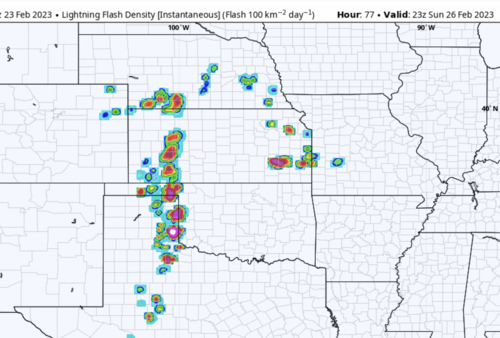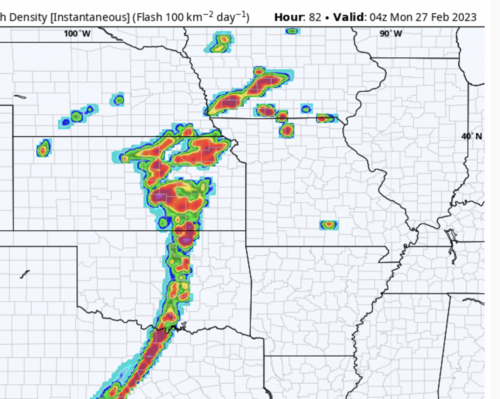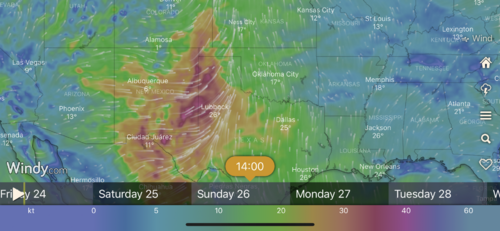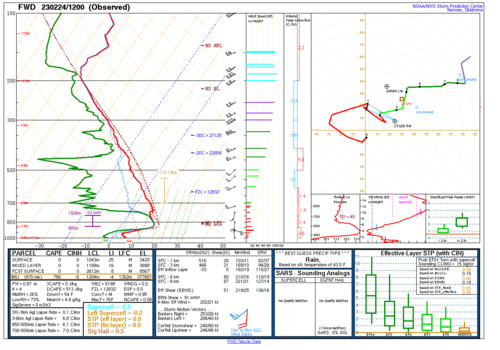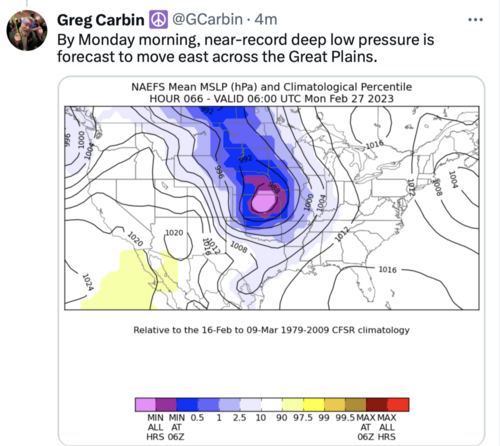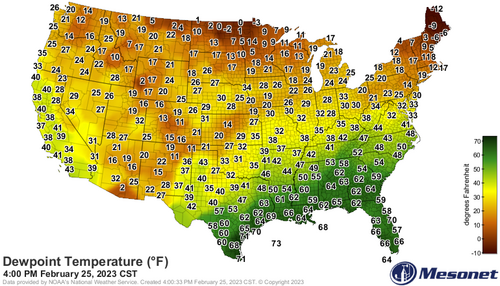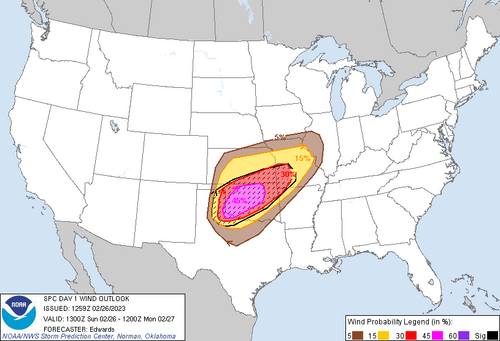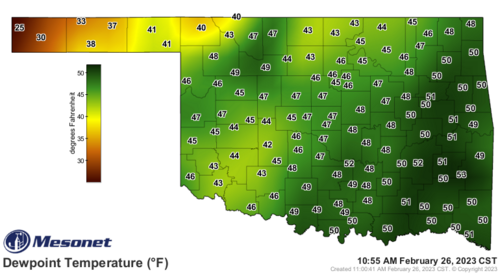Mike Smith
EF5
The 18Z ECMWF for Thursday, 23rd is in and -- wow. If this happens to be a "perfect prog" it is going to be a major early-season event.
I have attached the lightning flash rate for 23Z Sunday and it shows the storms still discreet along the dry line along with a few cells in the warm sector ahead of the line. Instability for February as far north as Kansas, is extremely high (vs climb) at 1000+ j/kg. The 500mb short wave, with difluent flow over N Oklahoma and S. Kansas, strengthens rapidly as it comes out of the lower Rockies.
At the surface, the low pressure system shows pressures falling from ~noon to 11pm when the low's central pressure drops to 980 mb near TOP at 06Z. Especially ominous is that temperatures do not drop Sunday evening in Wichita. They stay at the day's high of 59°F. At Eureka (2 counties E of ICT), the high for the day is 62°F, which occurs at 11pm! Similar conditions are forecast to occur in the TUL-MKO area. I did a synoptic climatology of nighttime tornadoes when I was at WeatherData, Inc. and rising evening temperatures + rapidly falling pressure in the threat areas were a common features of ≥F-2 tornadoes that occurred after dark.
My target for late afternoon or nighttime tornadoes would be to take the dry line as shown at late afternoon. From there, the area between I-44 and U.S. 56 seems prime for fast-moving tornadoes. Or, another way: DDC - IXD - TUL - CSM - DDC. The north boundary is the warm front. Of course, this may have to be revised based on later data but this one is well worth watching.
I have attached the lightning flash rate for 23Z Sunday and it shows the storms still discreet along the dry line along with a few cells in the warm sector ahead of the line. Instability for February as far north as Kansas, is extremely high (vs climb) at 1000+ j/kg. The 500mb short wave, with difluent flow over N Oklahoma and S. Kansas, strengthens rapidly as it comes out of the lower Rockies.
At the surface, the low pressure system shows pressures falling from ~noon to 11pm when the low's central pressure drops to 980 mb near TOP at 06Z. Especially ominous is that temperatures do not drop Sunday evening in Wichita. They stay at the day's high of 59°F. At Eureka (2 counties E of ICT), the high for the day is 62°F, which occurs at 11pm! Similar conditions are forecast to occur in the TUL-MKO area. I did a synoptic climatology of nighttime tornadoes when I was at WeatherData, Inc. and rising evening temperatures + rapidly falling pressure in the threat areas were a common features of ≥F-2 tornadoes that occurred after dark.
My target for late afternoon or nighttime tornadoes would be to take the dry line as shown at late afternoon. From there, the area between I-44 and U.S. 56 seems prime for fast-moving tornadoes. Or, another way: DDC - IXD - TUL - CSM - DDC. The north boundary is the warm front. Of course, this may have to be revised based on later data but this one is well worth watching.

